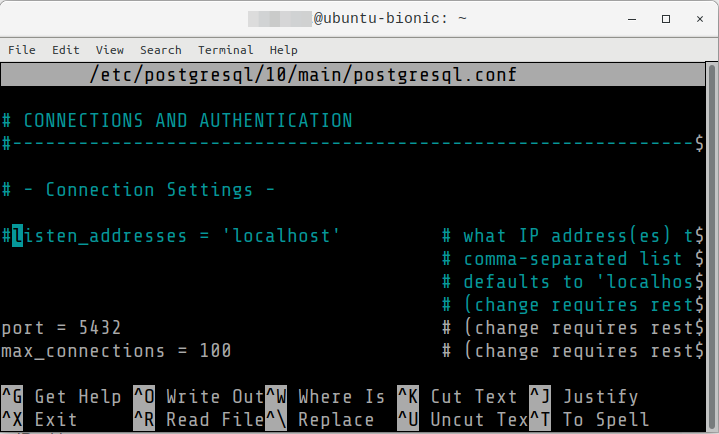
- #INSTALL POSTGRESQL UBUNTU HOW TO#
- #INSTALL POSTGRESQL UBUNTU INSTALL#
- #INSTALL POSTGRESQL UBUNTU UPDATE#
- #INSTALL POSTGRESQL UBUNTU CODE#
#INSTALL POSTGRESQL UBUNTU UPDATE#
We recommend installing PostgreSQL this way since it ensures a proper integration with the operating system, including automatic patching and other update management functionality.
#INSTALL POSTGRESQL UBUNTU INSTALL#
Install PostgreSQL on Ubuntu Install PostgreSQL from the Official Ubuntu Repository Step 1: Install PostgreSQL Step 2: PostgreSQL Roles and Databases Step 3: Set up a Role Step 4: Build a Database Step 5: Open a New Prompt Step 6: Table.
#INSTALL POSTGRESQL UBUNTU HOW TO#
This tutorial will show you how to install and use the version available by default with your version of Ubuntu and how to install it by adding the PostgreSQL repository and installing the same. If we want to deploy, say, PostgreSQL 12 instead of the current.

The command above will completely install the PostgreSQL database server and other required database modules and tools. Basically, all we need to do is run apt-get -y install postgresql This will automatically deploy the latest version of PostgreSQL. Now the GPG key and the repo are added and we are ready to install PostgreSQL 9.6 on our Ubuntu 20.04. Most Linux distributions such as Debian, CentOS, openSUSE, and Ubuntu have PostgreSQL integrated with their package management. Once the repositories are ready to use, we can actually go and install PostgreSQL on our Ubuntu server.
#INSTALL POSTGRESQL UBUNTU CODE#
PostgreSQL, also known as “Postgres,” is an advanced, enterprise-class open-source relational database management system (ORDBMS). A worldwide team of volunteers developed it, and it is pretty popular due to its stability and advanced features.Īny corporation or other private entity does not control PostgreSQL, and the source code is available free of charge.


Prior to starting these steps you will need to access your VPS through SSH.This article will cover how to install PostgreSQL on Ubuntu from the official Ubuntu repository or by adding the PostgreSQL repository and installing the same. In your command prompt, execute the following command to install PostgreSQL. Initially, you have to open a new terminal window for entering commands to execute the installation. But, in the post-installation, you will need to create an appropriate database and set user roles for everything to work well. Steps to Install PostgreSQL on Ubuntu Prerequisites. Installation of PostgreSQL on Ubuntu is simple. In this article, we are going to teach you about Tutorial Install PostgreSQL in Ubuntu 21. PostgreSQL can be installed and serviced on various models of operating systems such as Windows, Linux, and macOS. Obviously not required, but again, makes life simple. To make life simple, remove all other versions of Postgres. (Optional) Uninstall other versions of postgres. You will be using Ubuntu’s default repository with PostgreSQL packages. PostgreSQL is simply a database management system or DBMS that is optimized for different types of operating systems. This is a quick guide to install PostgreSQL 10 - tested on Ubuntu 16.04 but likely can be used for Ubuntu 14.04 and 17.04 as well, with one minor modification detailed below. This article offers the steps to install PostgreSQL on Ubuntu 18.04. After that, install the Postgres package along with -contrib package. 2) Since, it will be your first time using apt, it will be good to refresh your local package index. Therefore, you will install these by apt package manager system. It is very popular and used by several applications.īeing an open source, PostgreSQL is compatible with most OS, including Unix based systems. 1) Ubuntu’s default repositories have Postgres packages. If you want to find an alternative for MySQL, you will find multiple relational databases and one of them is the PostgreSQL. The data can be queried and accessed at any time and this is one of the biggest advantages of it.

These databases help to continue data and offer a logical structuring to it. Relational Databases are an important part of different applications and websites.


 0 kommentar(er)
0 kommentar(er)
